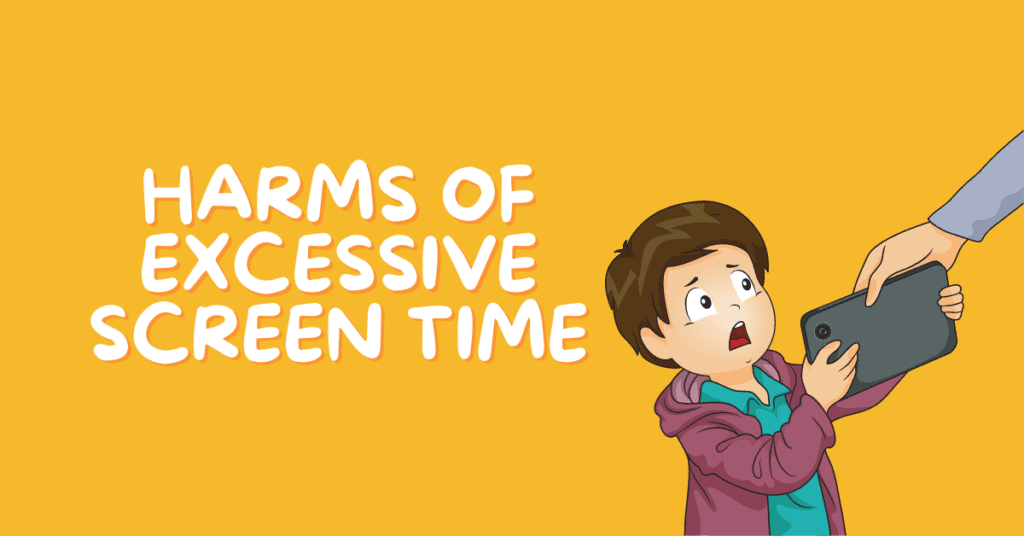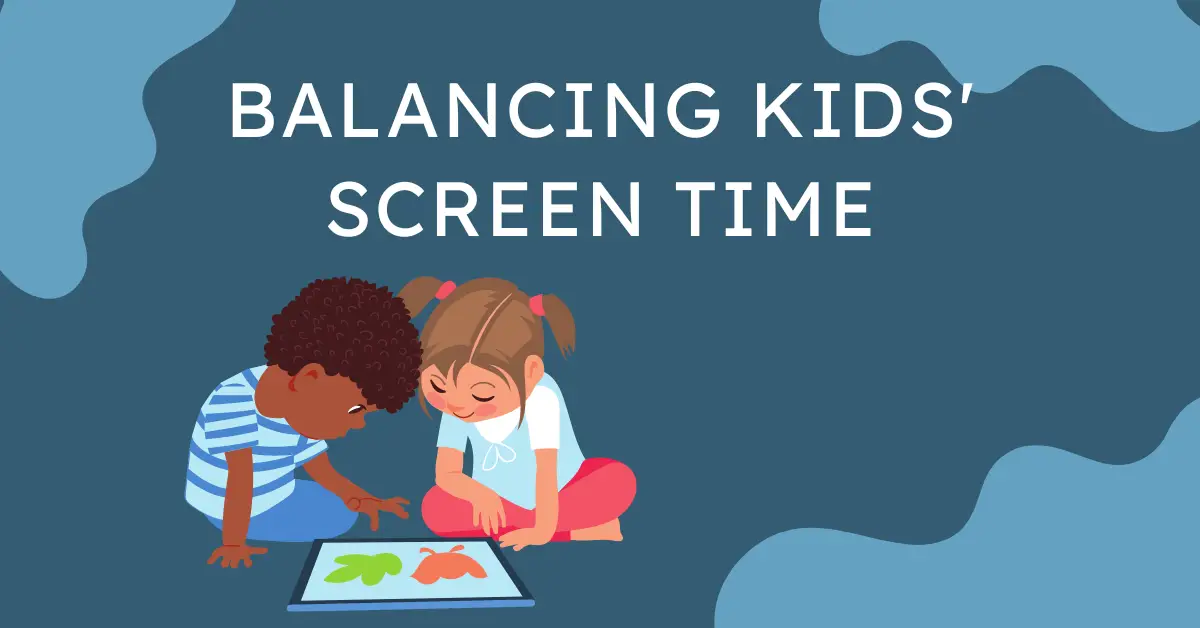The digital age has ushered in a new era of interconnectedness, giving children access to a wealth of information and resources at their fingertips. However, along with these benefits come challenges, notably the need to manage and balance screen time effectively. This article aims to explore the intricacies of screen time in the digital age, offering insights into both the positive and potentially harmful implications of this phenomenon for children. We will discuss the benefits of screen time, the risks associated with its excessive use, and provide practical tips on how to achieve a healthy balance.
Understanding Kids’ Screen Time
Screen time, defined as the time spent using a device with a screen such as a smartphone, computer, television, or gaming console, has become an integral part of our lives. The advent of digital technology has significantly increased the amount of time both adults and children spend in front of screens.
In the digital age, screen time isn’t just about passive consumption; it encompasses a broad range of activities including online learning, socializing, entertainment, and even creative expression. However, the high degree of immersion and interactivity offered by these devices can result in prolonged periods of use, especially among children.
The digital age has had a profound impact on children’s behaviour and development. As they navigate their digital environments, they’re learning to interact with the world in new ways, developing skills that were less emphasized in pre-digital generations. But it’s also clear that this newfound accessibility and reliance on digital devices have raised concerns about the potential adverse effects on their physical health, mental well-being, and social interactions.
Understanding screen time in the digital age requires a nuanced approach that considers both its potential benefits and pitfalls. As we delve deeper into this topic, it is crucial to remember that the aim is not to demonize technology but rather to learn how to harness its advantages while minimizing its risks.
The Benefits of Screen Time
Screen time isn’t inherently negative; when used correctly and in moderation, it can have various benefits for children. Here are some ways in which screen time can be beneficial:
A. Educational Benefits
Digital learning tools and resources have transformed the education landscape, offering children innovative ways to learn and explore. With access to online tutorials, educational apps, e-books, and platforms like Google Classroom and Khan Academy, children can supplement their in-class learning with these digital resources. Additionally, interactive tools can cater to different learning styles, making education more personalized and engaging.
B. Social Benefits
The Internet offers a platform for global connectivity and friendship building. Children can interact with their peers from different parts of the world, promoting cultural exchange and broadening their horizons. Social media platforms and multiplayer online games also provide spaces for kids to develop social skills, such as cooperation, negotiation, and conflict resolution.
C. Skills Development
The digital age demands a new set of skills, and screen time can help children develop these. For instance, they can cultivate technology literacy – an essential skill in the 21st century – by learning to navigate various apps and platforms. Screen time can also foster problem-solving skills, especially with strategic games that require players to overcome challenges. Creative apps and platforms enable kids to express themselves creatively, whether through digital art, music, coding, or content creation.
It’s important to note that these benefits hinge on the quality of screen time. Not all screen time is created equal; watching educational documentaries or coding is very different from mindless scrolling on social media or excessive gaming which is very different from watching a fun show on Disney Plus. The key is to ensure that children’s screen time is meaningful and productive and that it complements rather than replaces other essential activities, such as physical play, reading, and face-to-face social interaction.

The Potential Harms of Excessive Screen Time
While screen time can be beneficial when managed correctly, it’s crucial to be aware of the potential harms associated with excessive use. Here are some of the risks:
A. Physical Health Issues
Extended periods of sedentary behaviour, like sitting in front of a screen, can contribute to health issues such as obesity. Additionally, prolonged screen time can lead to vision problems like digital eye strain or “computer vision syndrome,” which includes symptoms such as dry eyes, blurred vision, and headaches. It can also interfere with sleep, especially if devices are used close to bedtime, as the blue light emitted by screens can disrupt the body’s natural sleep cycle.
B. Mental Health Issues
Several studies have suggested a link between excessive screen time and mental health issues in children, including depression, anxiety, and attention disorders. While the relationship is complex and can be influenced by many factors, there’s evidence that excessive screen use, particularly on social media, can contribute to feelings of social isolation, low self-esteem, and poor body image among children and teenagers.
C. Social Implications
While digital connectivity can offer social benefits, it also comes with potential risks. Excessive screen time can lead to social isolation, as it may reduce face-to-face interactions with family and peers. Moreover, the online environment can expose children to risks such as cyberbullying and harmful content. Spending a lot of time on social media platforms can also lead to unrealistic comparisons with others, which can impact self-esteem and lead to feelings of inadequacy.
Given these potential harms, it becomes imperative for parents, educators, and policymakers to take steps towards managing and limiting screen time effectively. The goal isn’t to eliminate screen time entirely but to create a balanced digital diet that incorporates healthy and diverse activities.
Recommendations for Balancing Screen Time
Achieving a healthy balance with screen time involves setting appropriate boundaries and promoting engaging offline activities. Here are some strategies that can be employed:
A. Importance of Setting Healthy Boundaries
It’s vital to establish rules about screen time. This might involve setting time limits, restricting use during specific times – like meal times or before bed, or defining which types of content are allowed. It’s beneficial to involve children in these discussions, helping them understand why boundaries are necessary and allowing them to have a say in the rules.
B. Practical Tips for Limiting Screen Time
Encourage regular breaks during screen time to reduce eye strain and promote physical activity. Make bedrooms a screen-free zone to improve sleep quality. Suggest activities that can replace screen time, such as reading, outdoor play, or hobbies. Also, consider a “digital detox” – a designated period without screens – to break the cycle of dependency.
C. The Role of Parental Control Software and Tools
Utilize tools and software that can help manage your child’s screen time and online activities. These can set daily limits, filter content, and monitor usage, aiding parents in overseeing their children’s digital engagement.
D. Strategies for Engaging Kids in Offline Activities
Make time for family activities that don’t involve screens, like board games, walks, or cooking together. Encourage children to participate in extracurricular activities, such as sports, music, or art classes, which can provide valuable skill development and social interaction.
Balancing screen time isn’t about strict restrictions but encouraging a variety of activities that foster well-rounded development. It’s about teaching children to be smart digital consumers and ensuring they’re not missing out on other essential childhood experiences.
The Role of Schools and Teachers in Balancing Screen Time
Schools and teachers play a crucial role in shaping children’s attitudes and habits related to screen time. Here’s how they can contribute:
A. Incorporating Technology in Education without Promoting Excessive Screen Time
Teachers can integrate technology into their lesson plans in ways that enhance learning without unnecessarily prolonging screen time. This might involve using digital tools to explain complex concepts, facilitate group projects, or assign creative tasks. However, they should balance this with non-digital activities and hands-on learning experiences.
B. Importance of Teaching Digital Literacy and Online Safety
Schools should provide students with the knowledge and skills to navigate the digital world safely and responsibly. This includes teaching them about online etiquette, privacy settings, recognizing and reporting cyberbullying, and discerning reliable information from misinformation online.
Schools have a unique opportunity to influence children’s digital habits. By adopting a balanced approach to technology use and teaching digital literacy skills, they can help children make the most of the digital age’s benefits while mitigating its risks.

Future Implications and Considerations
As we continue to navigate the digital age, screen time will remain a central topic of discussion. It is critical to understand and anticipate how evolving technology might change our consideration of screen time and its impact on children.
A. How Evolving Technology May Change Screen Time Considerations
New technologies such as virtual reality, augmented reality, and advances in artificial intelligence are likely to change how children interact with screens. These technologies might offer new learning and developmental opportunities but may also present unique challenges and risks that will need to be managed.
B. Potential Future Research on the Impact of Screen Time on Children
There’s a need for ongoing research to understand better the long-term effects of screen time on children’s physical health, mental well-being, and social development. Future studies might explore, for instance, how different types of screen time (educational versus entertainment, interactive versus passive) affect children differently.
C. Concluding Thoughts on Navigating Screen Time in the Digital Age
As we move forward, it’s important for parents, educators, and policymakers to continue seeking a balanced approach to children’s screen time. Technology and digital devices aren’t inherently harmful; they offer many educational and social benefits when used correctly. The key is to help children become mindful, informed digital citizens who can make the most of their screen time while also engaging in a range of non-digital activities that contribute to their overall development.
Balancing screen time in the digital age isn’t a one-size-fits-all solution. It requires continuous learning, adaptation, and open dialogue between children and adults. With the right strategies and mindset, we can ensure that our children grow up to be balanced digital consumers who can leverage the benefits of technology while minimizing its potential downsides.

